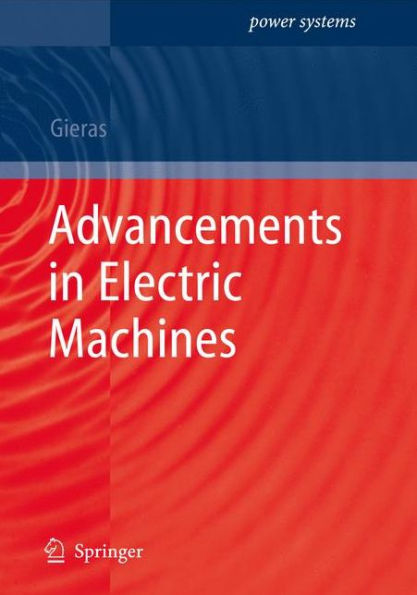Advancements in Electric Machines
Traditionally, electrical machines are classifled into d. c. commutator (brushed) machines, induction (asynchronous) machines and synchronous machines. These three types of electrical machines are still regarded in many academic curricula as fundamental types, despite that d. c. brushed machines (except small machines) have been gradually abandoned and PM brushless machines (PMBM) and switched reluctance machines (SRM) have been in mass p- duction and use for at least two decades. Recently, new topologies of high torque density motors, high speed motors, integrated motor drives and special motors have been developed. Progress in electric machines technology is stimulated by new materials, new areas of applications, impact of power electronics, need for energy saving and new technological challenges. The development of electric machines in the next few years will mostly be stimulated by computer hardware, residential and public applications and transportation systems (land, sea and air). At many Universities teaching and research strategy oriented towards el- trical machinery is not up to date and has not been changed in some co- tries almost since the end of the WWII. In spite of many excellent academic research achievements, the academia–industry collaboration and technology transfer are underestimated or, quite often, neglected. Underestimation of the role of industry, unfamiliarity with new trends and restraint from technology transfer results, with time, in lack of external financial support and drastic - cline in the number of students interested in Power Electrical Engineering.
1100317159
Advancements in Electric Machines
Traditionally, electrical machines are classifled into d. c. commutator (brushed) machines, induction (asynchronous) machines and synchronous machines. These three types of electrical machines are still regarded in many academic curricula as fundamental types, despite that d. c. brushed machines (except small machines) have been gradually abandoned and PM brushless machines (PMBM) and switched reluctance machines (SRM) have been in mass p- duction and use for at least two decades. Recently, new topologies of high torque density motors, high speed motors, integrated motor drives and special motors have been developed. Progress in electric machines technology is stimulated by new materials, new areas of applications, impact of power electronics, need for energy saving and new technological challenges. The development of electric machines in the next few years will mostly be stimulated by computer hardware, residential and public applications and transportation systems (land, sea and air). At many Universities teaching and research strategy oriented towards el- trical machinery is not up to date and has not been changed in some co- tries almost since the end of the WWII. In spite of many excellent academic research achievements, the academia–industry collaboration and technology transfer are underestimated or, quite often, neglected. Underestimation of the role of industry, unfamiliarity with new trends and restraint from technology transfer results, with time, in lack of external financial support and drastic - cline in the number of students interested in Power Electrical Engineering.
159.99
In Stock
5
1

Advancements in Electric Machines
278
Advancements in Electric Machines
278
159.99
In Stock

Product Details
| ISBN-13: | 9781402090066 |
|---|---|
| Publisher: | Springer Netherlands |
| Publication date: | 12/02/2008 |
| Series: | Power Systems |
| Edition description: | 2009 |
| Pages: | 278 |
| Product dimensions: | 6.10(w) x 9.25(h) x 0.03(d) |
From the B&N Reads Blog
